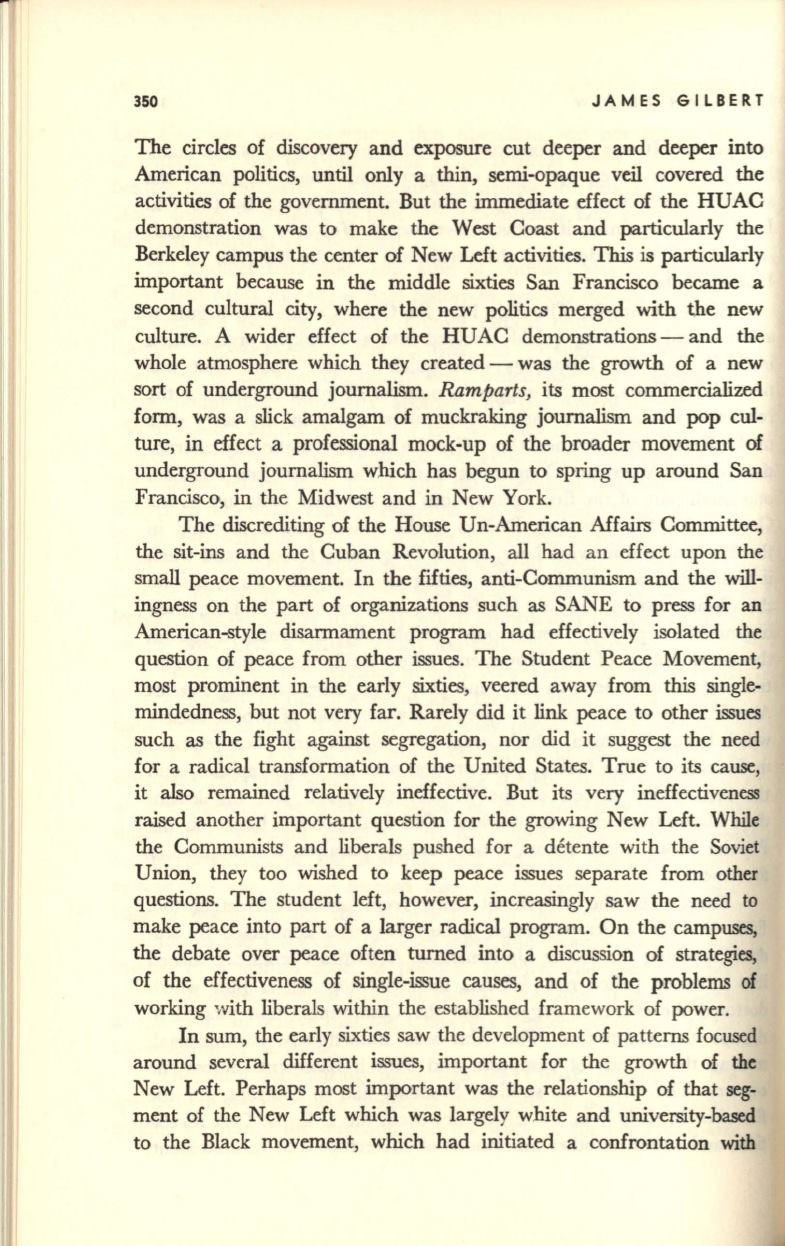
350
JAMES GILBERT
The circles of discovery and exposure cut deeper and deeper into
American politics, until only a thin, semi-opaque veil covered the
activities of the government. But the immediate effect of the HUAC
demonstration was to make the West Coast and particularly the
Berkeley campus the center of New Left activities.
This
is particularly
important because in the middle sixties San Francisco became a
second cultural city, where the new politics merged with the new
culture. A wider effect of the HUAC demonstrations - and the
whole atmosphere which they created - was the growth of a new
sort of underground journalism.
Ramparts,
its most commercialized
form, was a slick amalgam of muckraking journalism and pop cul–
ture, in effect a professional mock-up of the broader movement of
underground journalism which has begun to spring up around San
Francisco, in the Midwest and in New York.
The discrediting of the House Un-American Affairs Committee,
the sit-ins and the Cuban Revolution, all had an effect upon the
small peace movement. In the fifties, anti-Communism and the will–
ingness on the part of organizations such as SANE to press for an
American-style disarmament program had effectively isolated the
question of peace from other issues. The Student Peace Movement,
most prominent in the early sixties, veered away from this single–
mindedness, but not very far. Rarely did it link peace to other issues
such as the fight against segregation, nor did it suggest the need
for a radical transformation of the United States. True to its cause,
it also remained relatively ineffective. But its very ineffectiveness
raised another important question for the growing New Left. While
the Communists and liberals pushed for a detente with the Soviet
Union, they too wished to keep peace issues separate from other
questions. The student left, however, increasingly saw the need to
make peace into part of a larger radical program. On the campuses,
the debate over peace often turned into a discussion of strategies,
of the effectiveness of single-issue causes, and of the problems of
working with liberals within the established framework of power.
In sum, the early sixties saw the development of patterns focused
around several different issues, important for the growth of the
New Left. Perhaps most important was the relationship of that seg–
ment of the New Left which was largely white and university-based
to the Black movement, which had initiated a confrontation with


